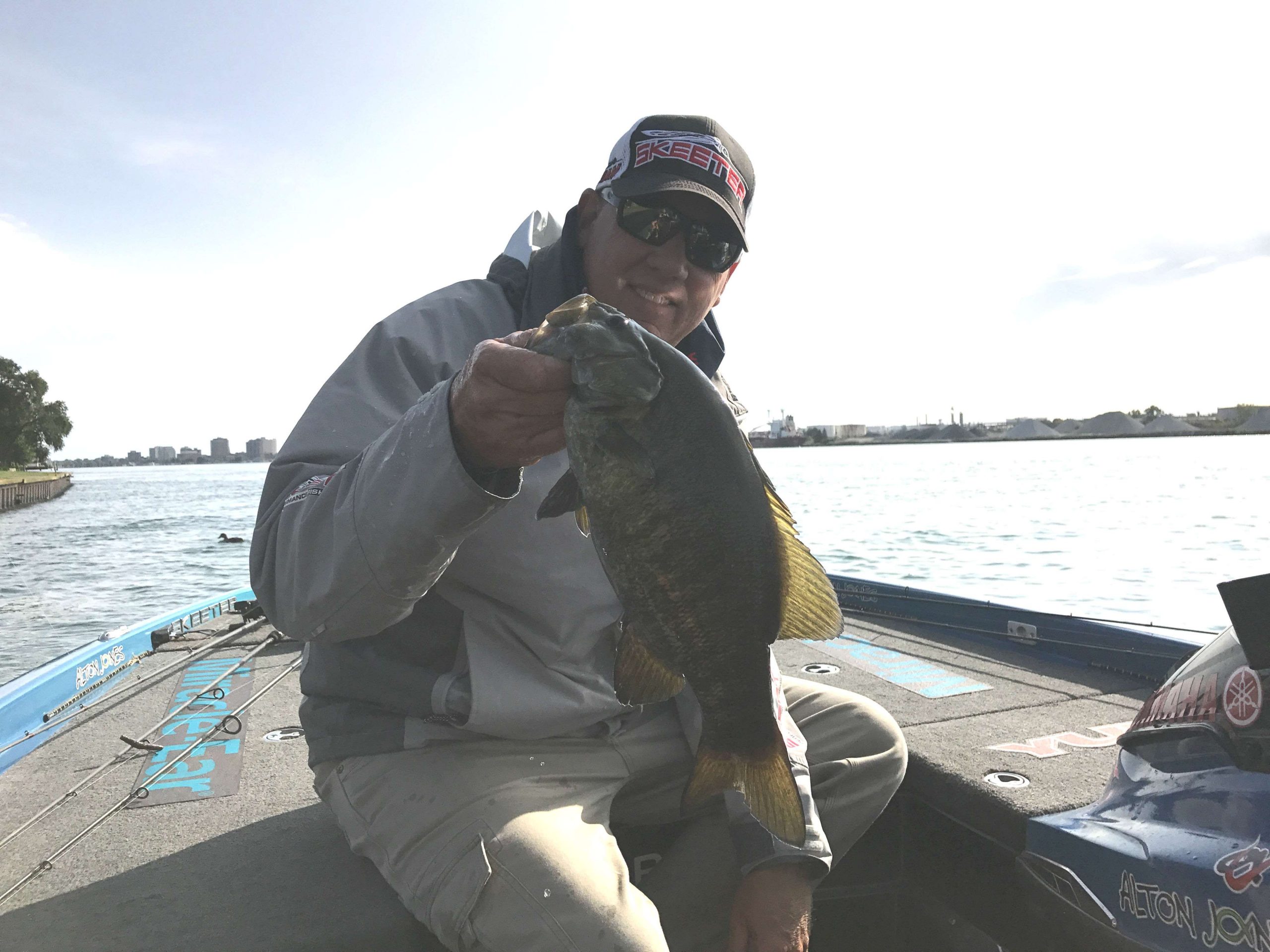
All the extreme cold we’re having is putting a spotlight on one of my favorite techniques — suspending jerkbaits. This is the first super-cold winter we’ve had in several years, and while you can always catch fish on a jerkbait in the winter, it’s on right now.
You need the water to drop down into the mid- to low-40’s to have a shad die-off around my home in East Texas. We’re not quite there, but the fish are biting like there’s a shad die-off. I mean it is happening.
The great thing about a jerkbait is that, anywhere below the ice belt, it works throughout the winter. You know, we think about a jig as a great cold weather bait, but there are times it gets too cold for a jig. But it really never gets too cold for a suspending jerkbait.
My bait of choice is a Smithwick Rogue. There are many other productive jerkbaits on the market, but nationwide, when it gets bone chilling cold, the number one bait for anglers in the know is the suspending Rogue.
On 10-pound fluorocarbon, you can get the original Rogue down to about 6 feet, but the Perfect 10 Rogue that we developed a few years ago will reach 10-12 feet. If I’m fishing over standing timber, I’ll go up to 12-pound line.
When I’m selecting my baits, I let water visibility guide my decision on which to throw. Overall clarity — at least a foot and a half — is a must for suspending jerkbaits, but down to about that 4-foot line, I’ll throw the original suspending Rogue. If the visibility is in the 5- to 10-foot range, I’ll usually pick up the Perfect 10 because fish tend to hold deeper in clearer lakes.
Now, presentation is important with jerkbaits and after making a long cast, I’m going to quickly jerk it several times to get the bait down to depth. Now, this is when cadence comes into play and every day you have to try and determine what pace the fish want.
The basic rule of thumb is that the colder the water, the slower you want to move your bait. And by “slow” I don’t mean the speed at which you jerk it; I mean the length of time you let it pause.
There are those extremely cold days where each jerk is just a 3-inch twitch of my rod tip — just enough to make the bait dance before pausing. Then, on those warmer winter days when the water temperature reaches into the upper 40s, it’s going to be more of a jerk-jerk-jerk and then the pause.
Figuring out how long each pause should be really comes down to experimentation, but I can say that if you’re not catching fish, it’s usually because you’re not letting the bait pause long enough.
Working a bait as fast as you can with fewer pauses may be more efficient, but it’s not always practical for winter conditions. Some days, you may need a 20-second pause between bait movements. That’s painstakingly slow.
My suggestion is that, if you’re in an area where there are some good fish, start with a 5-second pause then move up to 10 seconds. A 10-second pause feels like an eternity; a 20-second pause feels like a day. You won’t be able to make as many casts in a day with long pauses, but if that’s what it takes to earn a bite, that’s what you have to do.
Last piece of advice: Don’t overthink your jerkbait colors this time of year. Remember, you’re trying to imitate shad, so pearl and chartreuse are good options. My favorite is Table Rock Shad, which has a white belly, chartreuse sides and a purple that really stands out in the clear winter water.

